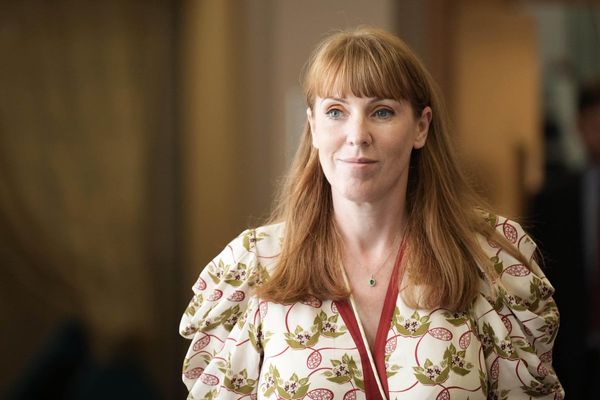
A new scholarly analysis of 30 years of news reporting in Australia has found that journalists have overwhelmingly failed to report on climate change in a way that benefits all of society.
Our multidisciplinary team, gathered by RMIT’s Innovation Catalyst, used machine learning techniques to examine 180,000 articles about climate change and related environmental issues.
Climate change was just one of the team’s focus areas and was chosen because it is one of our most critical social issues at this moment in time.
The analysis found that Australian news journalists have overwhelmingly produced stories and narratives that serve the needs of the powerful and significantly distract from critical policy and social issues that affect ordinary Australians.
The full findings are detailed in a new report focused on how the Australian media reports on climate change.
Coal over-represented, climate action under-represented
A key observation is the staggering growth in the number of articles written about climate change over time. In the 1990s, there were only an average of 514 articles per year on climate change. By the 2010s, that number had risen to over 80,000 articles per year.
We found that as climate targets and timelines passed, the news media has changed in both its quantity and focus on climate change reporting: from writing about forecasts to covering disasters.
Of all the articles, coal mining stood out as one of the most-reported topics in relation to climate change.
The focus on mining is a result of the Australian economy being firmly reliant on extracting resources for export and charged political discussions about the granting or closing of mining licenses. Indeed, the effects of politics are clearest around Australia’s May 2022 elections, which resulted in the highest number of climate change articles: 1,328 in the month of May compared to just 259 articles in December of that year.
While some Australian journalists have played a part in highlighting the climate change crisis, the news industry has been slow to cover solutions such as initiatives that encourage more regenerative futures through recycling, remanufacturing, or reuse of products to reduce pressure on the environment. A clear example is with the term “circular economy”, which was first coined in 1988 but only started to be taken up by the Australian media in 2017. By 2022, it was reported in over 200 articles a year.
The RMIT team, working with related NGOs, also looked at how the news media covered climate activism. There was an extraordinary spike in reporting on climate activism and protests in the months around Greta Thunberg’s student climate strikes of September 2019. By 2020, however, the COVID-19 pandemic had shut down climate protests and strikes, and reporting returned to fewer than 10 articles a month and remained low.
Gendered differences in climate change reporting
The analysis also found an interesting gender issue with climate change reporting. Fewer than 40% of climate change articles were authored by women, compared to more than 60% by men.
The only topic area where women were more likely to write articles was on topics relating to the protection of biodiversity and regenerative systems such as circular economy initiatives — arguably the most direct way ordinary people can support “climate action” in everyday communities and the private sector.
Our analysis reinforces other studies that have found women are under-represented in reporting on fields related to climate change (e.g. mining, renewables, STEM) and that men are often seen as those with the most authority on the issue of climate change.
We argue that gender inequity impacts who is quoted as experts on climate change, with women’s perceived credibility and authority on climate issues being lesser, and women less quoted as experts by male reporters.
The domination of male voices in climate change reporting indicates that climate change issues tend to be perceived more from masculine points of view. This kind of news coverage can result in a negligence toward the interests of women, who are widely recognised as being more vulnerable to the effects of climate change and natural disasters.
While more research is needed on how and why these gendered differences occur, effective news coverage about climate is critical in generating support for policy and action.
Revealing the reporting patterns to support change
The analysis showed that news attention on issues tends to intensify in times of major crises and then taper off. But the problem for environmental issues is that they require long-term solutions, rather than quick fixes. The news media’s short attention span for Greta Thunberg’s climate strikes or interest in the immediate effects of coal mining has not helped Australians make sense of policy or assist in the conversation to consensus on energy transitions.
Further, a lack of gender parity in climate reporting means that most news stories are written from a male perspective about male interests rather than female-favoured ones, such as initiatives in local communities to drive more regenerative futures.
Is there still a role for solutions-focused or constructive journalism in covering this issue in this critical climate decade?
Despite all the odds, we believe there is, and universities have an important role to play in the support and development of this media agenda.
Data was obtained from Dow Jones content available via the Data News and Analytics (DNA) platform.
I was just one team member in this work which was led by the RMIT Innovation Catalyst’s Campbell McNolty, Sai Ram Gitte, Mondo Kad and Dr Brad Crammond and Infoxchange’s Dr Kristen Moeller-Saxone.
The climate change data was examined by: The Global Institute for Women’s Leadership’s Dr Elise Stephenson; The Victorian Circular Activator’s Dr Akvan Gajanayake; Centre for Urban Research’s Professor Wendy Steele.
Our research aims to expose the patterns of news reporting on major societal issues such as climate change to help journalists consider new and more equitable ways of reporting on the issues which impact everyone.
We hope to encourage public debate to answer questions such as how can the media influence the sustained societal change that is required for more holistic and systemic solutions to be adopted.
How should the media be covering climate change? Let us know your thoughts by writing to letters@crikey.com.au. Please include your full name to be considered for publication. We reserve the right to edit for length and clarity.







